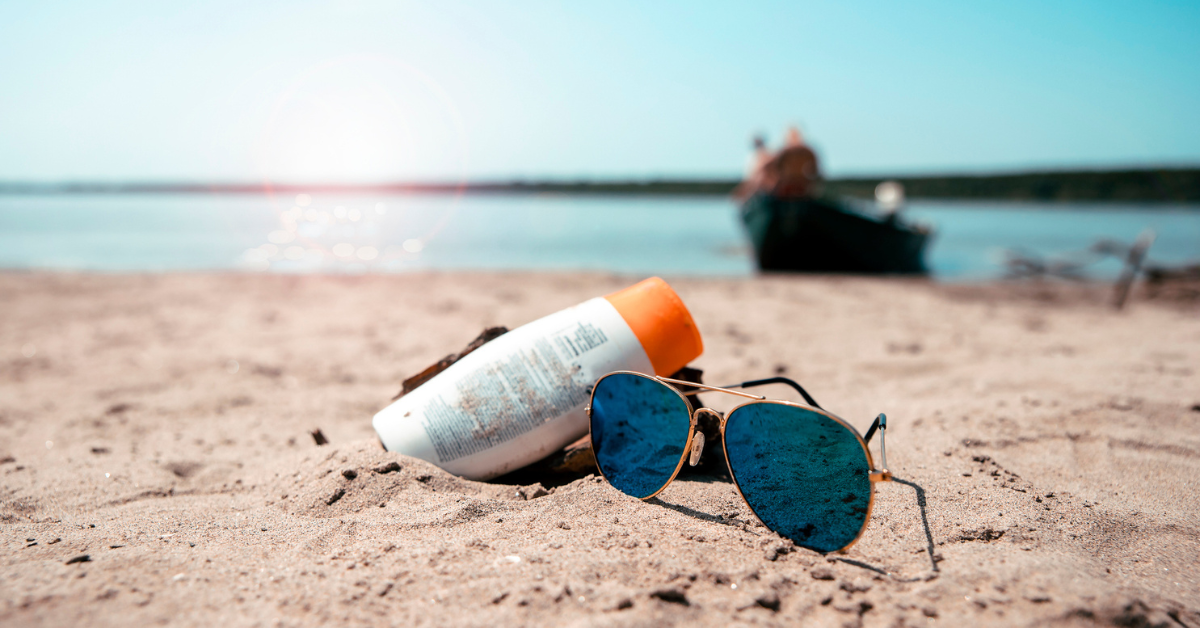New Inpatient Visitor Check-In Process Effective March 10. Learn more here.
Breadcrumb
- Home
- Thrive Cancer Blog
- Why Should You Protect Your Skin from the Sun this Summer?

Why Should You Protect Your Skin from the Sun this Summer?
-
During the summer months, chances are you will be spending more time outdoors. In order to protect your skin from sun damage, Fox Chase Cancer Center specialists advise you to become familiar with the early signs of skin cancer.
According to the American Cancer Society (ACS), skin cancer is by far the most common cancer in the U.S. There are three main types of skin cancer. Basal cell and squamous cell skin cancers are the most common. They tend to develop on sun-exposed areas of the skin such as the face, ears, neck, lips and the backs of hands. They are much less likely than melanomas to spread to other parts of the body and become life- threatening.
Melanoma is much more dangerous and can occur anywhere on the body, even in places not normally exposed to the sun. The American Academy of Dermatology (AAD) reports that melanoma causes most skin cancer deaths—more than 8,000 deaths per year in the United States.
“The great news is that both basal cell and squamous cell skin cancers and melanoma are often curable when found and treated early,” says Jeffrey M. Farma, MD, FACS, Chair, Department of Surgical Oncology, and Co-Director, Melanoma and Skin Cancer Program, at Fox Chase. “I highly encourage individuals to have their skin checked annually by a dermatologist or other physician. They should also examine their own skin every month just by using a mirror.”
Signs of skin cancer
Check your skin thoroughly, from head to toe, watching for:
• Any change on your skin, especially in the size or color of a mole, growth or spot, or a new growth (even if it has no color).
• Scaliness, oozing, bleeding or a change in the way a bump or nodule looks.
• The spread of pigmentation (color) beyond its border, such as dark coloring that spreads past the edge of a mole or mark.
• A change in sensation, such as itchiness, tenderness or pain.
“Individuals should contact their physician immediately if they notice any of these warning signs on their skin,” explains Dr. Farma. “Everyone is subject to the potential adverse effects of sun overexposure. The key is to play it safe by avoiding prolonged exposure and practicing sun safety.”Stay safe this summer
Sun safety is important year-round. But long, sunny summer days encourage many of us to spend more time outdoors. And many summer clothes—or swimsuits—offer less protection from harmful ultraviolet (UV) radiation than the long sleeves and puffy coats of winter.
That doesn’t mean you should miss out on summer fun. But it’s important to take steps to protect yourself. Consider these simple tips:
• Seek shade, particularly in midday hours—between 10 a.m. and 4 p.m.— when the sun’s rays are strongest. Use the shadow test to determine the strength of the sun’s rays: If your shadow is shorter than you, the sun’s rays are the strongest, so be sure to protect yourself.
• Use a broad spectrum (UVA/UVB) sunscreen with an SPF of 30 or higher every day on all unprotected skin. Reapply every two hours and after swimming, toweling dry or sweating. Use sunscreen even on hazy or overcast days.
• Cover up with protective, tightly woven clothing and a broad-brimmed hat. Avoid straw hats with holes that let sunlight through. UV-blocking sunglasses are also essential for protecting the delicate skin around the eyes and the eyes themselves.
• Avoid tanning beds, booths and sunlamps. According to the AAD, indoor tanning increases a person’s risk of getting skin cancer, including melanoma. Indoor and outdoor tanning are both dangerous.We’ve got you covered
The Fox Chase Cancer Center Melanoma Program offers comprehensive care at every step of your journey—from detection through survivorship. To learn more, call 888-369-2427 or request an appointment online.
Share
-
Share with Facebook
-
Share with twitter
-
Share with email
-
Print this
